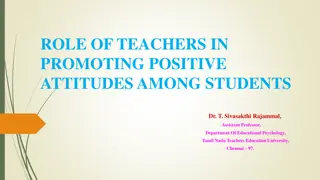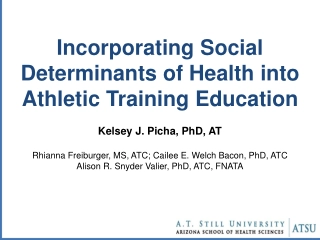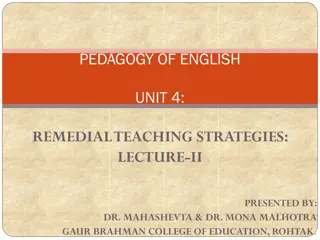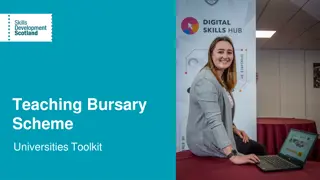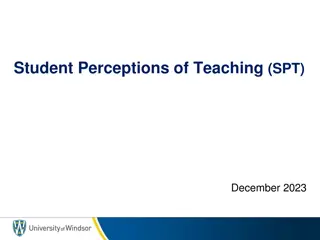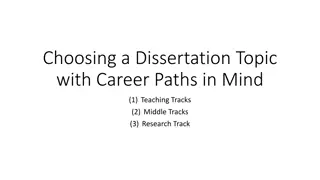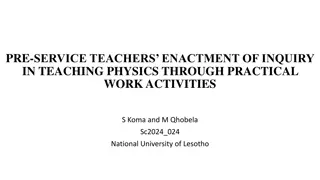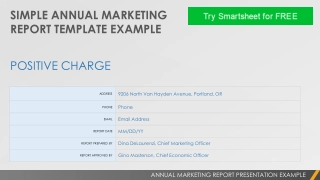TEACHING FOR POSITIVE BEHAVIOUR
This resource aims to help teachers enhance student behavior, engagement, participation, and learning through positive teaching practices. It provides tools, videos, and strategies based on the New Zealand Curriculum, promoting inclusive and culturally responsive teaching. Key features include fostering positive relationships, encouraging reflection, and promoting an inquiry-based approach. The structure covers creating a supportive environment, encouraging reflection and action, facilitating shared learning, and providing ample learning opportunities.
Download Presentation
Please find below an Image/Link to download the presentation.
The content on the website is provided AS IS for your information and personal use only. It may not be sold, licensed, or shared on other websites without obtaining consent from the author. Download presentation by click this link. If you encounter any issues during the download, it is possible that the publisher has removed the file from their server.
- Teaching Strategies
- Positive Behavior Support
- Student Engagement
- Inclusive Pedagogies
- Culturally Responsive Practices
Presentation Transcript
TEACHING FOR POSITIVE BEHAVIOUR Supporting engagement, participation, and learning
Te piko o te mhuri, tr te tupu o te rkau. The way a sapling is nurtured determines how strong it will grow as a tree.
Acknowledgments / Ng mihi The writer, Dr Tracy Rohan The teachers and students who appear in photographs in the resource and in the videos that accompany it PB4L SW schools and kura that have informed the resource Richard Busfield and Angus Macfarlane, who speak in the accompanying videos TEACHING FOR POSITIVE BEHAVIOUR 3
Purpose of the resource To support teachers to understand and draw on effective practices that enhance students behaviour engagement participation learning. TEACHING FOR POSITIVE BEHAVIOUR 4
Components of Teaching for Positive Behaviour A 68-page book A self-assessment tool Four introductory videos This PowerPoint presentation TEACHING FOR POSITIVE BEHAVIOUR 5
Key features of the resource 1. The New Zealand Curriculum is its foundation. 2. It presents universal strategies that can be used with all students in years 1 13. 3. It promotes culturally responsive practices and inclusive pedagogies. 4. It supports positive student student and student teacher relationships. 5. It encourages teacher reflection on effective practices for supporting positive behaviour. 6. It promotes inquiry, problem-solving, and sharing of effective practices. TEACHING FOR POSITIVE BEHAVIOUR 6
Framework for the resource TEACHING FOR POSITIVE BEHAVIOUR 7
Structure of the resource Introduction Section 1: Creating a supportive learning environment Section 2: Encouraging reflective thought and action Section 3: Facilitating shared learning Section 4: Providing sufficient opportunities to learn Section 5: Reflection, inquiry, and problem solving TEACHING FOR POSITIVE BEHAVIOUR 8
Using Teaching for Positive Behaviour in years 18 DESIGNER -- Embed video 2, linking to video clip online https://pb4l.tki.org.nz/PB4L-School- Wide/Support-material TEACHING FOR POSITIVE BEHAVIOUR 9
Using Teaching for Positive Behaviour in years 913 DESIGNER Embed video 3, linking to video clip online https://pb4l.tki.org.nz/PB4L-School- Wide/Support-material TEACHING FOR POSITIVE BEHAVIOUR 10
Each major section includes Key strategies unpacked and illustrated over 1 4 pages Stories from practice Professional learning activities Links to additional information (websites, videos, articles etc) TEACHING FOR POSITIVE BEHAVIOUR 11
Each major section includes Key strategies unpacked and illustrated over 1 4 pages Stories from practice Professional learning activities Links to additional information (websites, videos, articles etc) TEACHING FOR POSITIVE BEHAVIOUR 12
Section 4: Providing sufficient opportunities to learn A UDL approach TEACHING FOR POSITIVE BEHAVIOUR 13
Providing sufficient opportunities to learn 1. Presenting information in a variety of ways to support understanding 2. Providing alternatives for students to demonstrate their learning 3. Supporting student responses 4. Providing choice 5. Structuring tasks strategically TEACHING FOR POSITIVE BEHAVIOUR 14
Each major section includes Key strategies unpacked and illustrated over 1 4 pages Stories from practice Professional learning activities Links to additional information (websites, videos, articles etc) TEACHING FOR POSITIVE BEHAVIOUR 15
Example of a story from practice: Taylor & Millie Read the story on page 21 and discuss with your neighbour: What are the key messages in this story? What are the examples of inclusive practice that the story highlights? How have barriers to learning, participation, and engagement been removed for Millie? TEACHING FOR POSITIVE BEHAVIOUR 16
Example of a story from practice: Max Max, a year 11 student in a Dunedin college, has successfully avoided written work for many years. While he has ideas and experiences to share and an interest in automotive engineering that suggests a likely career path, disengagement in the classroom has put him on the wrong side of many of his teachers and resulted in a low rate of task completion. Typically Max has a hard time getting started on writing tasks, has difficulty planning and sequencing ideas, and struggles with spelling and the mechanics of writing. He shows his frustration and lack of motivation through non-compliance and a tendency to distract others with off-task behaviour. This year the school has been implementing a Universal Design approach to remove barriers to success for students such as Max. A learning coach has helped Max to embark on a personalised pathway, ensuring that schoolwork feels more relevant and aligned with his plans for the future. Max s teachers have successfully implemented a number of strategies to support his learning, particularly in the area of writing. TEACHING FOR POSITIVE BEHAVIOUR 17
Example of a story from practice: Max Working in a small group, discuss how would you use the strategies below to support Max to be more engaged in the classroom, particularly in writing: Presenting information in a variety of ways to support understanding Providing alternatives for students to demonstrate their learning Supporting student responses Providing choice Structuring tasks strategically TEACHING FOR POSITIVE BEHAVIOUR 18
Example of a story from practice: Max (continued) Max s teachers have successfully implemented a number of strategies to support his learning, particularly in the area of writing. These include: offering alternative ways for Max to show and share his learning and knowledge for example, digital tools such as speech recognition software mean that the physical act of writing is no longer the chore it once was ensuring that writing tasks are high interest with authentic topics for authentic audiences Max has had particular success writing a blog reviewing new cars in the style of Top Gear dividing work into smaller, more manageable tasks, with a reduced assignment load and focusing on quality rather than quantity using graphic organisers and mind mapping to help with the organisation and sequencing of ideas. According to the year 11 dean, Max has now found a new gear and is well placed for a successful year as he tackles NCEA level 1. (page 47) TEACHING FOR POSITIVE BEHAVIOUR 19
Each major section includes Key strategies unpacked and illustrated over 1 4 pages Stories from practice Professional learning activities Links to additional information (websites, videos, articles etc) TEACHING FOR POSITIVE BEHAVIOUR 20
Example of a professional learning activity Section 2 focuses on Encouraging reflective thought and action . The activity below is based on its first key strategy, Encouraging self-regulated behaviours . Read pages 28 29. Then work with 3-4 colleagues to: discuss paragraphs 1-2: what ideas stood out for you? discuss paragraphs 4-5: what implications do they have for your everyday classroom practice? complete the activity at the bottom of page 29. TEACHING FOR POSITIVE BEHAVIOUR 21
Each major section includes Key strategies unpacked and illustrated over 1 4 pages Stories from practice Professional learning activities Links to additional information (websites, videos, articles etc) TEACHING FOR POSITIVE BEHAVIOUR 22
Example of links to additional information The webpage Teacher Talk Moves and the video Improving Participation with Talk Moves discuss a helpful strategy for encouraging learning conversations between students. The document Turn and Talk: Procedures and Routines unpacks the benefits and routines associated with the turn and talk strategy. The strategy think, pair, share is explored on the website Instructional Strategies Online. From page 48, for the strategy Supporting student responses Go to https://pb4l.tki.org.nz/PB4L-School-Wide/Support-material to download the PDF of the book and activate the links. TEACHING FOR POSITIVE BEHAVIOUR 23
Reflection, inquiry, and problem solving 1. Supports teacher professional learning and problem solving to improve outcomes for students 2. Encourages individual as well as whole-school inquiry 3. Helps to understand behaviour and what might be driving it 4. Includes questions to support collaborative problem solving 5. Includes questions to support planning an appropriate response TEACHING FOR POSITIVE BEHAVIOUR 24
Supporting individual students or small groups of students DESIGNER -- Embed video 4, linking to video clip online https://pb4l.tki.org.nz/PB4L-School- Wide/Support-material Wide/Support-material https://pb4l.tki.org.nz/PB4L-School- TEACHING FOR POSITIVE BEHAVIOUR 25
Self-assessment tool Supports teachers to examine their practice Based on the strategies that Teaching for Positive Behaviour promotes Will help you review your learning environment and approaches that support engagement, participation, and learning Can help you to identify aspects of practice to work on especially when done with a colleague or a peer observer Available as an interactive PDF or Word document at https://pb4l.tki.org.nz/PB4L-School-Wide/Support-material TEACHING FOR POSITIVE BEHAVIOUR 26
Kia kaha t koutou mahi! TEACHING FOR POSITIVE BEHAVIOUR







